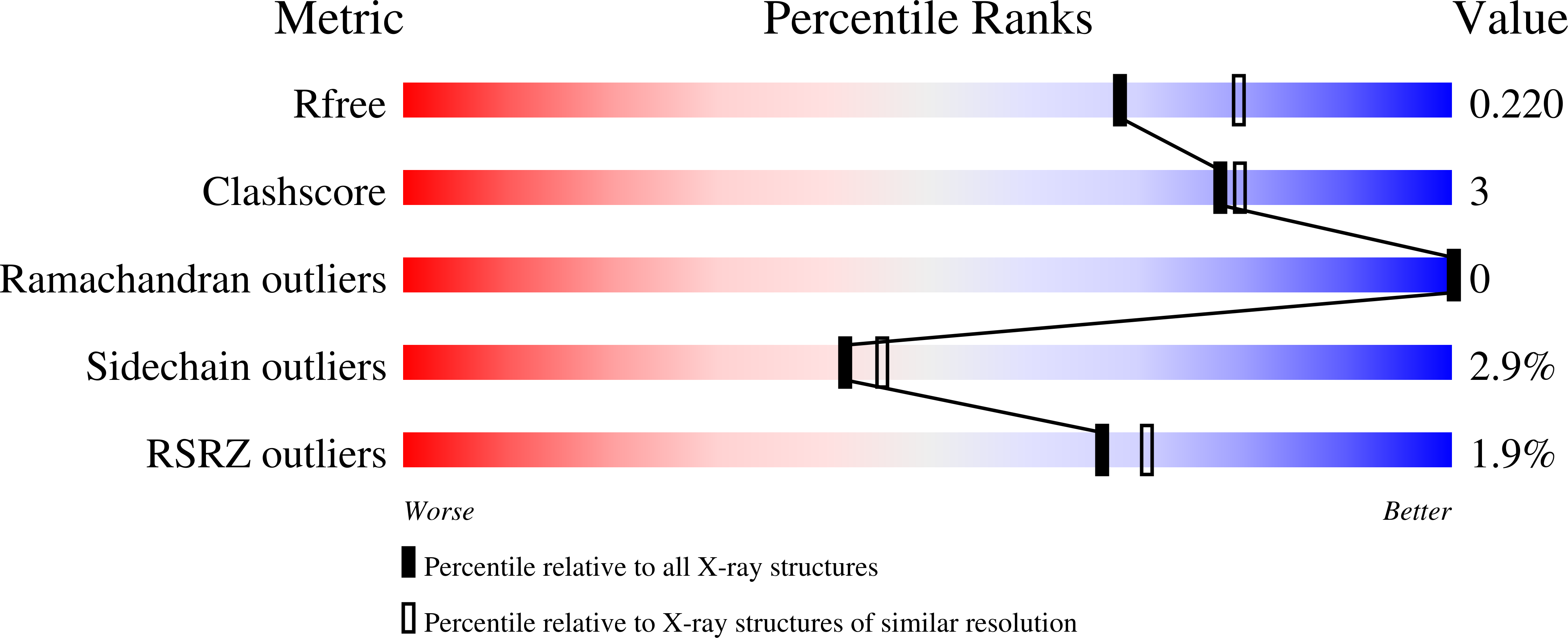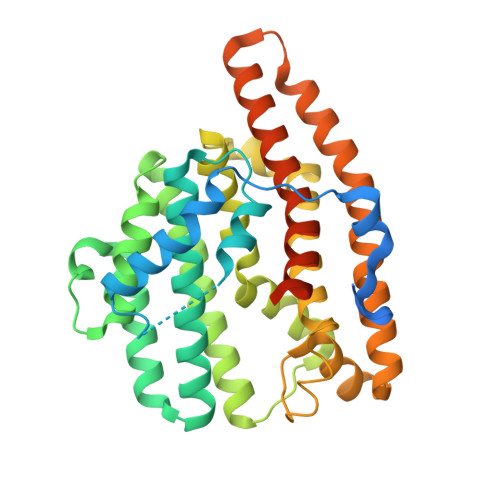Substitution of Aromatic Residues with Polar Residues in the Active Site Pocket of epi-Isozizaene Synthase Leads to the Generation of New Cyclic Sesquiterpenes.
Blank, P.N., Barrow, G.H., Chou, W.K.W., Duan, L., Cane, D.E., Christianson, D.W.(2017) Biochemistry 56: 5798-5811
- PubMed: 28967743
- DOI: https://doi.org/10.1021/acs.biochem.7b00895
- Primary Citation of Related Structures:
6AX9, 6AXM, 6AXN, 6AXO, 6AXU - PubMed Abstract:
The sesquiterpene cyclase epi-isozizaene synthase (EIZS) catalyzes the cyclization of farnesyl diphosphate to form the tricyclic hydrocarbon precursor of the antibiotic albaflavenone. The hydrophobic active site pocket of EIZS serves as a template as it binds and chaperones the flexible substrate and carbocation intermediates through the conformations required for a multistep reaction sequence. We previously demonstrated that the substitution of hydrophobic residues with other hydrophobic residues remolds the template and expands product chemodiversity [Li, R., Chou, W. K. W., Himmelberger, J. A., Litwin, K. M., Harris, G. G., Cane, D. E., and Christianson, D. W. (2014) Biochemistry 53, 1155-1168]. Here, we show that the substitution of hydrophobic residues-specifically, Y69, F95, F96, and W203-with polar side chains also yields functional enzyme catalysts that expand product chemodiversity. Fourteen new EIZS mutants are reported that generate product arrays in which eight new sesquiterpene products have been identified. Of note, some mutants generate acyclic and cyclic hydroxylated products, suggesting that the introduction of polarity in the hydrophobic pocket facilitates the binding of water capable of quenching carbocation intermediates. Furthermore, the substitution of polar residues for F96 yields high-fidelity sesquisabinene synthases. Crystal structures of selected mutants reveal that residues defining the three-dimensional contour of the hydrophobic pocket can be substituted without triggering significant structural changes elsewhere in the active site. Thus, more radical nonpolar-polar amino acid substitutions should be considered when terpenoid cyclase active sites are remolded by mutagenesis with the goal of exploring and expanding product chemodiversity.
Organizational Affiliation:
Roy and Diana Vagelos Laboratories, Department of Chemistry, University of Pennsylvania , Philadelphia, Pennsylvania 19104-6323, United States.














